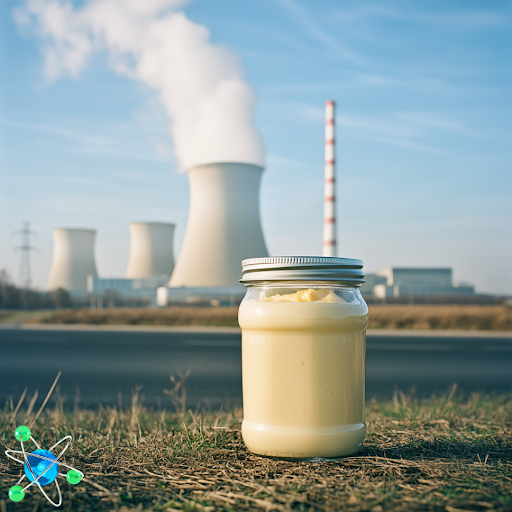
- Mayonnaise is being used by researchers to model the complex physics of nuclear fusion, specifically by mimicking the behavior of fusion capsules under extreme conditions.
- The team at Lehigh University, led by Arindam Banerjee, studies the flow properties of mayonnaise to understand and control instabilities in plasma during inertial confinement fusion.
- This innovative research aims to improve the predictability and efficiency of nuclear fusion, potentially unlocking a sustainable and limitless energy source.
You may be wondering how in the world does a condiment contribute to the development of the almost limitless energy source that is nuclear fusion. Well, to be honest, it is actually the key to unlocking the challenges that the development of nuclear fusion faces. To be specific, the physical properties that mayonnaise exhibits under certain conditions allow researchers to understand the complex physics involved in nuclear fusion.
The sun gets its energy from fusion reactions, and by replicating these fusion reactions on earth, not only would it be environmentally friendly but it is essentially limitless. Inertial confinement fusion is a method that creates nuclear fusion reactions from the intense pressure and heating of tiny capsules filled with fuel, such as isotopes of hydrogen. As the capsules liquify from the immense compression and temperatures, it forms into plasma in which this state of matter has the potential to generate energy
What researchers have been trying to figure out is the “structural integrity of fusion capsules used in inertial confinement fusion” explains Arindam Banerjee, the Paul B. Reinhold Professor of Mechanical Engineering and Mechanics at Lehigh University. Banerjee stresses “that the plasma state forms these hydrodynamic instabilities, which can reduce the energy yield”.
Banerjee and his team published their first paper on the subject in 2019, which examined the Rayleigh-Taylor instability. The instability leads to unstable stratification as materials of different densities experience opposing density and pressure gradients.
The team chose mayonnaise as its behavior resembled a solid, however, when subjected to a pressure gradient, it begins to flow. Utilizing mayonnaise also eliminates the necessity for high pressure and temperature conditions that are tough to manage. To replicate the flow conditions of the plasma, Banerjee’s team utilized a unique rotating wheel facility and as the acceleration reached a point past critical value, the mayonnaise started to flow.
Analyzing the mayonnaise, Banerjee explains that “there’s an elastic phase followed by a stable plastic phase. The next phase is when it starts flowing, and that’s where the instability kicks in”. The significance of the research is to understand the transition from the elastic phase to the stable plastic phase and by controlling the condition to remain in these phases, the risk of instability can be mitigated. With the use of mayonnaise, Banerjee’s team is “trying to enhance the predictability of what would happen with those molten, high-temperature, high-pressure plasma capsules”. The research of Banerjee and his team is essential to unlocking the potential of limitless energy that nuclear fusion can provide.
The research conducted by Banerjee and his team highlights the innovative use of mayonnaise to better understand the hydrodynamic instabilities in nuclear fusion, ultimately aiming to enhance the predictability and efficiency of energy generation through this promising technology. This approach not only addresses the challenges faced in nuclear fusion but also underscores the potential of nuclear fusion as a sustainable and virtually limitless source of energy.
